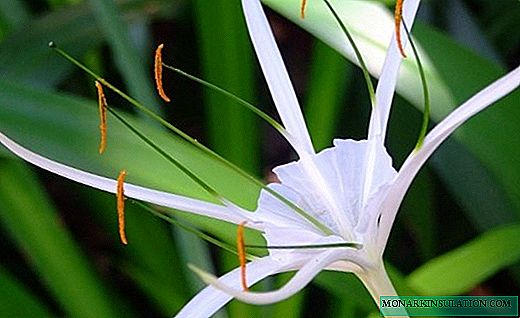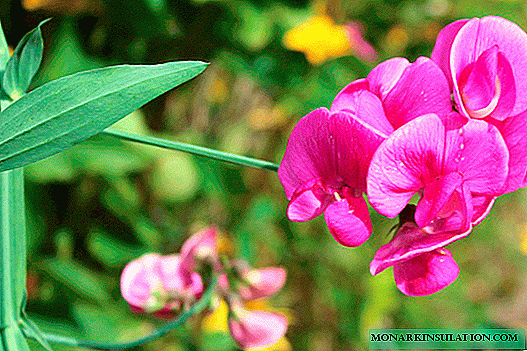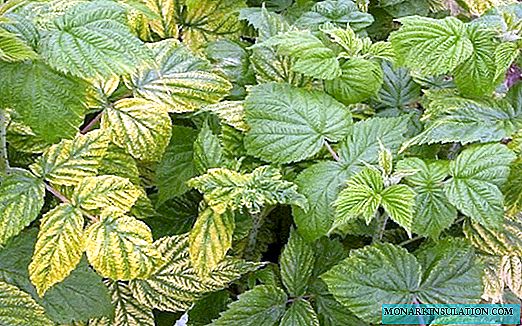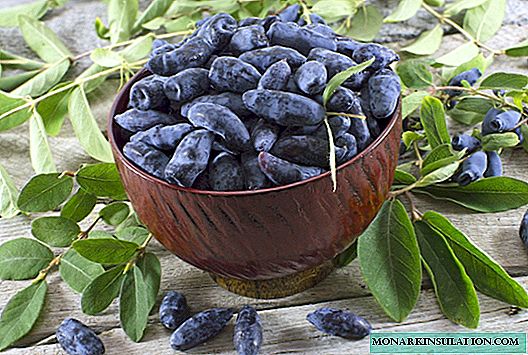The schizanthus (or schizanthus) belongs to the nightshade family. The habitat is South America and southern Africa. The plant is beautiful and has a long flowering. Culture outwardly resembles an orchid, but unlike it is less demanding and not capricious. Therefore, it acquired the popular name "poor orchid" or "butterfly flower". Its cultivation is within the power of any gardener.
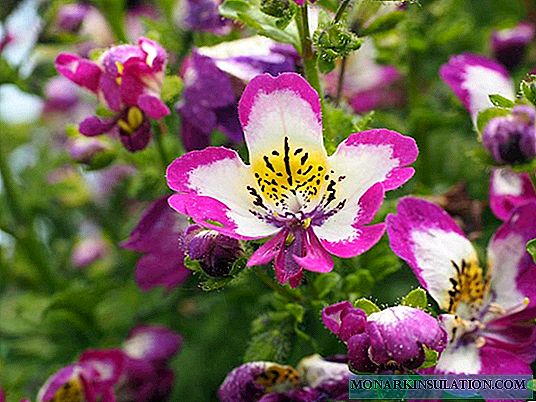
Schizanthus features
A very interesting beautiful plant blooms for a long time and densely until the first frosts. It is a perennial or biennial, but in the middle lane it is also cultivated as an annual. Bushes vary in growth, flowers - spectacular color. Plant height from 30 cm to a meter. The stem and leaves are covered with fluff. Petals in their shape resemble butterfly wings, they are red, purple, purple, white and even yellow, striped, two-tone, spotted.
Schizanthus will become a worthy decoration of any garden or site.  Graham
Graham
Types and varieties of schizanthus
The culture has about 12 different varieties. The table shows the most popular ones.
| View | Description | Flowers / Height | Varieties |
| Graham | Cultivated since 1831. There is a wide palette of flowers. Branched bush, annual. Grows in the Andes, Chile. Height is about 50-60 cm. Inflorescences can be spotty, striped or interspersed. | Violet. | Var. lilacinus. |
| Purple. | Var. aibus. | ||
| White, scarlet. | Var. carmineus. | ||
| Pinnate | Bred in 1822. Annual Large selection of varieties and shapes of flowers. Originally from South America. It grows in length from 45 cm. | Small petals, striped, lilac, white, scarlet. Inflorescences are collected from small fluffy flowers of racemose shape. Flowering May - September. | Piccollo. |
| Viseton | Exists since 1900. A popular hybrid, crossed from the two previous species, is an annual. Has multi-colored, interesting shapes, large flowers. | Scarlet. Reaches 40 cm. | Diamond. |
Large, carmine color. About 30-40 cm high. | Rother Herold. | ||
| Scarlet, carmine. Dwarf, no more than 25 cm tall. | ZwergBukett. | ||
White, petals of an interesting form, visually resembling angel wings. About 40 cm tall. | Angel wings. | ||
Flowers with a diameter of up to 2 cm. Red, one-time, cream color. Growth up to 40 cm. | Monarch. | ||
| Striped or spotty. Pink, raspberry, purple. Tubular shape. Does not exceed 20 cm. | Fiji. | ||
Flowering - July-September. Petals are cream, pink, raspberry. Reaches 55 cm. | Hybrid mix. |
Seed cultivation
It is not difficult to grow a plant with or without seedlings in open ground, for this you need to familiarize yourself with the basic principles.
Seeding for seedlings
You can accelerate flowering provided that: if seedlings are first grown from seeds. The most suitable time of year is autumn, since closer to summer you can observe the first flowering.
To achieve the most continuous flowering, sowing is best done once a month, from September to April.
Scatter over loose soil, sprinkle a couple of millimeters with sand on top and cover with plastic wrap or clear glass to create a greenhouse effect. It is recommended to store the container in a dark place, observing the temperature regime of + 15 ... +23 ° C. Sowing ripens in about three weeks, according to gardeners, the first seedlings appear at night. When the first leaves appear, seedlings are planted in different containers, taking into account up to 3 pieces per pot. When the shoots reach a height of 8 cm, and then 16 cm, it is necessary to pinch.
Before planting in open ground, you should let the seedlings get used to the sunlight. Do not rush to get rid of weakened seedlings, since later they can bloom very effectively and densely.
Site selection and soil preparation
You need to plant a schizanthus in a well-lit place. In an arid environment, partial shade. With a lack of sunlight, the flowers bloom poorly, the plant loses its spectacular decorative appearance, stretches out. Culture is demanding on the soil: it must be sufficiently moist and rich in nutrients. To do this, the soil is pre-fertilized with compost, humus or overripe manure. Be sure to use drainage.
Open sowing
Sowing is carried out in late April or early May, when the air has already warmed up enough at night. The soil must be acidified and drained. Sand or peat is added to the ground. Many gardeners plant a flower in pots, so that during dry weather or heavy rainfall, place it in a more protected place - for example, on a terrace or balcony.  Pinnate
Pinnate
Planting seedlings in open ground
Seedling is necessary only after warm weather, when frosts are excluded. Pits should be prepared with a small layer of humus. To plant seedlings together with an earthen lump in a marked depression. Bury the sprouts to a depth of about 10 cm. When digging holes, observe the distance between them, paying attention to the height of the bush: low - about 25 cm, medium - 40 cm, tall - at least 70 cm. If necessary, use support for tall plants. It is advisable to make a landing with a difference of a few days in order to observe the development.
Schizanthus Care
A flower requires considerable attention and the fulfillment of certain conditions for personal care.
Watering
It is necessary to carefully consider watering the plant due to the fact that the flower does not like either waterlogging or drying out. It should be carried out according to the degree of drying of the surface of the earth, a stream of water should be directed accurately under the root, without falling onto leaves and flowers. Water should be warm.
Settled rain water, naturally heated in the sun, is perfect.
Fertilizers
Schizanthus very gratefully perceives systematic top dressing. For these purposes, use complexes of mineral fertilizers, before flowering - phosphoric. From planting to the first bloom, fertilize every month, then every week, but halving the concentration of fertilizing by half. Subsequently, it will provide rich, beautiful and bright flowering.
When using the plant as a houseplant, garden soil is added to the pot, in which peat and sand are also planted. It is very important to provide drainage. Water home schizanthus with complex fertilizers. Further, the same care is required as for other indoor plants.
Possible diseases and pests
The most common schizanthus diseases:
- Late blight - brown plaque and spots on the leaves. The reason may be acidic soil, deficiency of phosphorus, potassium, excessively humid air.
- Pitiosis - rotting of the root system. Appears due to overfeeding or excessive watering.
- Anthracnose is the formation of brown spots, a common fungal disease.
Affected parts of the plant are removed, treated with fungicide.
For the prevention of diseases, the same measures should be applied as for potatoes and tomatoes, since the plant belongs to the same family.
The main pests: whitefly, aphids, thrips. An insecticide is used to cure it. It is necessary to carefully monitor the number of insects, as they are carriers of various diseases.
Mr. Dachnik advises: the use of schizanthus in landscape design
Thanks to the impressive beauty of the flowers, the plant is actively distributed in landscape design for the visual decoration of the garden:
- used in the formation of flower beds;
- planted singly or in bulk;
- used to create beautiful alpine slides;
- decorate balconies, terraces, verandas;
- planted in pots and hanging pots;
- decorate on the sides of paths and paths;
- brought into the room during cold weather.
 Viseton
VisetonHarmoniously combined with petunias, lobelia, alissum, chamomile, pelargonium, phlox, digitalis.

